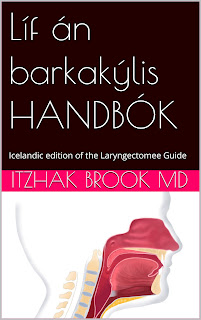A new study by UC San Francisco and University
of Pittsburgh has found that regular use of nonsteroidal anti-inflammatory
drugs (NSAIDs), such as aspirin and ibuprofen, significantly improves survival
for a third or more patients with HNC.
NSAIDs improved the overall 5-year
survival rate from 25% to 78% for patients whose cancer contained a specific
altered gene, known as PIK3CA. The survival for patients whose gene was not
altered was unaffected by NSAID use.
PIK3CA is the most commonly altered
oncogene in head and neck squamous carcinoma, and is found in a third of all
tumors. In HNC associated with the human papillomavirus (HPV), PIK3CA is
mutated in more than half of tumors.
The retrospective study included 266
patients. Most patients (67%) received post-surgery chemotherapy and/or
radiotherapy. PIK3CA gene activating alteration was found in 28% in the
patients. Among the patients who regularly used NSAIDs, 93% used aspirin (81mg/day)
as a component of the NSAID regiment, and 73% took aspirin exclusively.
The investigators learned that regular
use of NSAIDs for at least 6 months provided markedly prolonged improved
survival compared to non-use for patients whose PIK3CAgene was mutated or
amplified. In these patients, NSAIDs raised overall five-year survival from 25%
to 78%. However, patients without alterations in their PIK3CA gene were no
better off by taking NSAIDs.
This is the first study to show a strong
clinical advantage of regular NSAID use for HNC patients with mutations in the
PIK3CA gene and may indicate a clear, biological reason to implement NSAID
therapy in certain cases of HNC patients
Through analysis of both cell line and
mouse studies, the researchers speculated that NSAIDs likely blocked tumor
growth by reducing the production of an inflammatory molecule called
prostaglandin E2.
The researchers have designed a
prospective, randomized clinical trial to address the study’s limitations (small
numbers and retrospective nature of the study) to assess the clinical
significance of this therapeutic use.











































